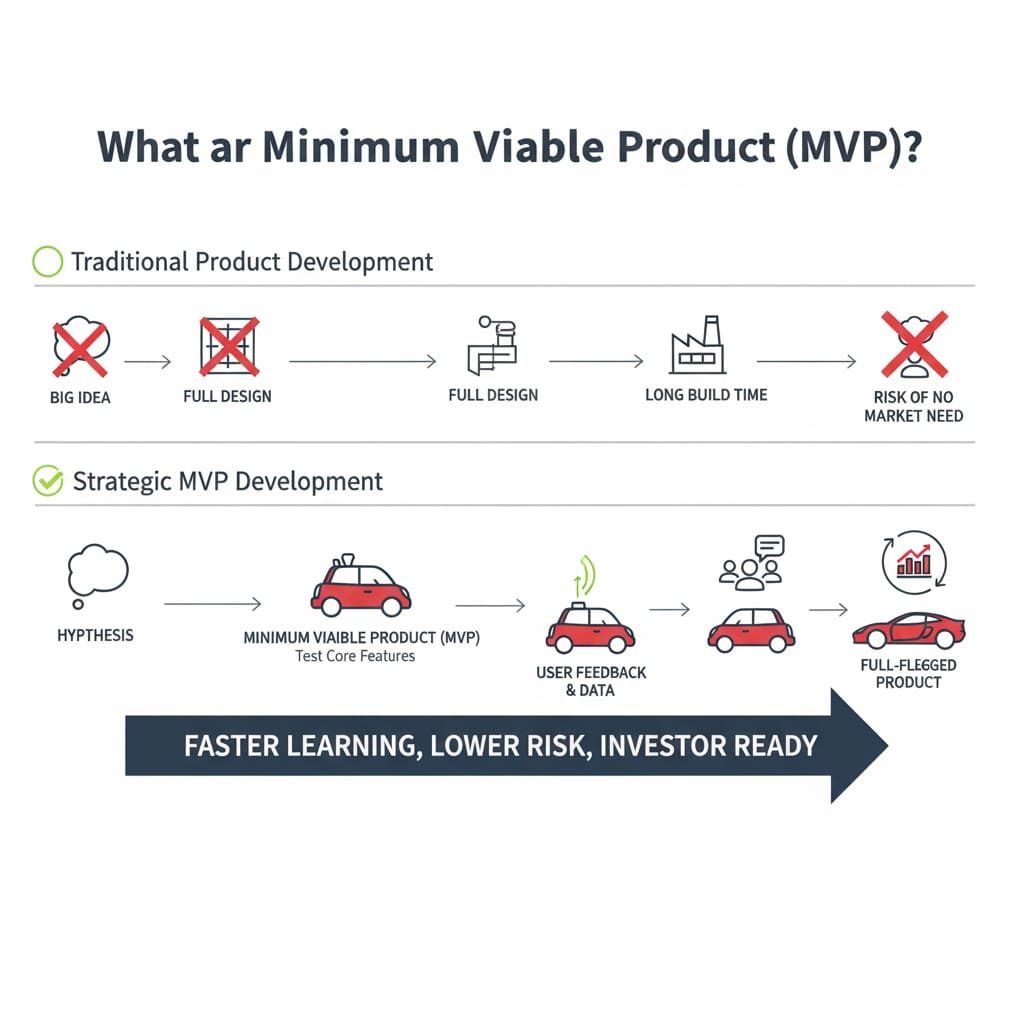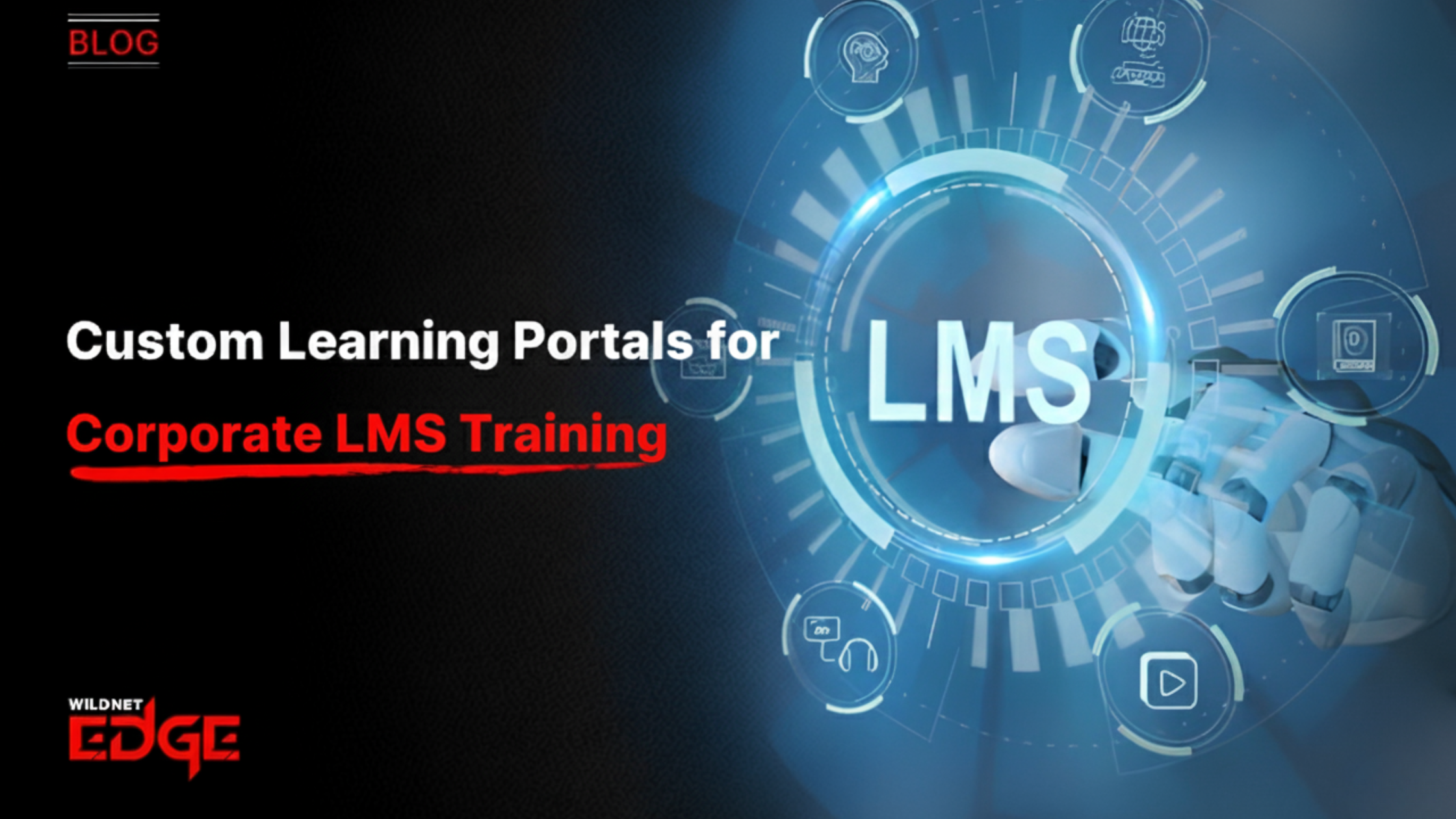Every startup begins with a big idea. You have a vision for a product that will change the industry. But turning that vision into a reality is a major challenge, especially with limited resources. This is where the strategy of MVP development for startups comes in. Building a Minimum Viable Product, or MVP, is the smartest, safest and fastest way to bring your idea to life. This guide will explain why it’s the most critical first step you can take.
What is a Minimum Viable Product (MVP)?
First, let’s define what an MVP is. An MVP is not just a cheaper version of your final product. Instead, it is a strategic tool. It is the most basic version of your product that has just enough features to be usable by early customers. The main goal of an MVP is not to make a lot of money right away. Rather, its purpose is to get your product into the hands of real users as quickly as possible so you can get their feedback.
This approach is all about learning. It allows you to test your core assumptions before you invest a huge amount of time and money. As a result, it is the foundation of a successful business strategy.

Why the MVP Approach is Crucial for Startups in 2025
In today’s fast-moving market, you can’t afford to spend a year building a product in secret. By the time you launch, the market may have already changed. The MVP approach is more relevant than ever because it prioritizes speed and learning.
The Power of Startup Product Validation
The number one reason startups fail, according to CB Insights, is “no market need.” An MVP directly tackles this problem. It is the ultimate tool for startup product validation. Instead of guessing what your customers want, you can show them a working product and see how they react. Do they use the core feature? Are they willing to pay for it? This real-world feedback is far more valuable than any survey or market research report.
Embracing Lean Development Principles
The MVP is a core concept of the lean development methodology. This approach is all about eliminating waste. Building features that nobody wants is the biggest waste of all. By starting with an MVP, you ensure that you only spend your limited resources on developing features that customers have proven they will use. This lean approach, which is central to effective Software Development for Startups, helps you conserve cash and extend your runway.
Attracting Early Investors
Investors are more likely to fund a startup that has a working product and real user feedback. An MVP is tangible proof that you can execute on your vision. It shows that you are a smart founder who knows how to test ideas and manage resources effectively. Consequently, having an MVP can make a huge difference when you are trying to raise your seed round.
MVP vs. Full-Featured Product: A Strategic Choice
Deciding between an MVP and a fully-featured product is a critical decision. Here’s a simple breakdown to help you understand the difference.
| Feature | Minimum Viable Product (MVP) | Full-Featured Product |
| Primary Goal | Learning and Validation | Market Domination |
| Features | Only the essential core feature. | A comprehensive set of features. |
| Development Time | 4-12 weeks. | 6-12+ months. |
| Cost | Low initial investment. | High investment. |
| Risk | Low risk of building the wrong thing. | High risk of market rejection. |
| Best For | Testing a new idea and gathering feedback. | Scaling a proven product. |
Our MVP Development Services in Action: Case Studies
Case Study 1: A SaaS Platform for Small Businesses
- The Challenge: A founder had an idea for a new project management tool but was competing in a very crowded market. They were not sure which features would make their product stand out.
- Our Solution: As their MVP Development Company, we worked with them to identify one unique feature: an AI-powered task scheduler. We built an MVP that did only that one thing perfectly.
- The Result: Early users loved the core feature. The startup used this positive feedback and initial traction to secure a $500,000 seed investment. They are now using that funding to build out the full product.
Case Study 2: A Consumer Mobile App for Fitness
- The Challenge: A fitness entrepreneur wanted to build a complex social fitness app with live classes, meal tracking and community features. The full cost was far beyond their budget.
- Our Solution: We helped them launch an MVP that focused only on creating and sharing workout plans. This allowed them to build an initial community and validate the demand for their approach before investing in the more expensive features.
- The Result: The MVP was downloaded 10,000 times in the first three months. The user data showed a high demand for healthy recipes, so they used this insight to guide their next development phase, ensuring they built a feature their community actually wanted.
The Technology Stack for Lean and Agile Development
We use modern, scalable technologies that are perfect for MVP development. This allows us to build fast and iterate quickly.
- Frontend: React, Vue.js, Angular
- Backend: Node.js, Python, Ruby on Rails
- Mobile: React Native, Flutter (for cross-platform MVPs)
- Database: PostgreSQL, MongoDB
- Cloud & DevOps: AWS, Google Cloud, Docker, Kubernetes
Conclusion
In conclusion, MVP development for startups is not about cutting corners. It is the most strategic and resource-efficient way to build a successful business. By focusing on startup product validation and embracing lean development, you can dramatically reduce your risk and increase your chances of success. It allows you to build a conversation with your market from day one. At Wildnet Edge, our AI-first approach to our Product Development Services means we can even help you integrate smart, simple AI features into your MVP, creating a powerful differentiator right from the start.
FAQs
The cost of an MVP can vary widely, but for a high-quality product developed by a professional agency, a realistic budget typically ranges from $20,000 to $60,000. The final price depends on the complexity of the core feature.
The key is to identify the one core problem your product solves. The MVP should include only the features that are absolutely essential to deliver that core value proposition. We use workshops and prioritization exercises to help founders make these tough but critical decisions.
A well-defined MVP can usually be designed, developed and launched within 2 to 4 months. The goal is to move quickly from idea to feedback.
The post-launch phase is all about measuring and learning. You will collect user feedback and data to validate your assumptions. This information then guides the next cycle of development, where you will iterate on the product, add new features and move toward a full-fledged solution.
While a freelancer can be cheaper, an agency provides a full team (designers, developers, project managers) and a more structured process. For a project as critical as your startup’s first product, the reliability and comprehensive expertise of an agency offering Custom Software Development Services is often the safer and more valuable choice.
An MVP transforms your pitch. Instead of just presenting an idea, you are presenting a working product with real user data and feedback. This demonstrates your ability to execute and proves that there is a real market for your solution, which is exactly what investors want to see.
Absolutely. A well-architected MVP is built with scalability in mind. It serves as the foundation of your final product. The codebase is designed to be expanded upon as you iterate and add more features based on user feedback.

Nitin Agarwal is a veteran in custom software development. He is fascinated by how software can turn ideas into real-world solutions. With extensive experience designing scalable and efficient systems, he focuses on creating software that delivers tangible results. Nitin enjoys exploring emerging technologies, taking on challenging projects, and mentoring teams to bring ideas to life. He believes that good software is not just about code; it’s about understanding problems and creating value for users. For him, great software combines thoughtful design, clever engineering, and a clear understanding of the problems it’s meant to solve.
 sales@wildnetedge.com
sales@wildnetedge.com +1 (212) 901 8616
+1 (212) 901 8616 +1 (437) 225-7733
+1 (437) 225-7733































